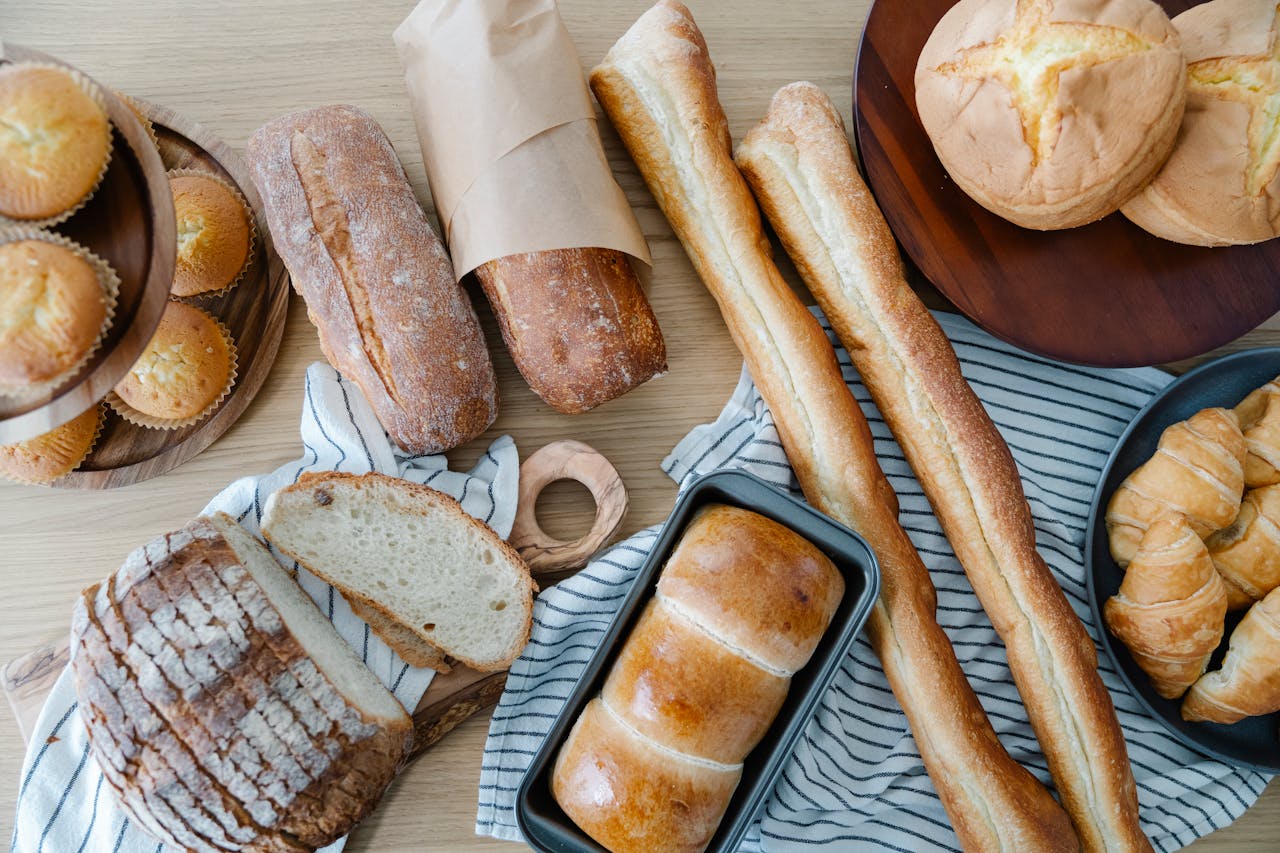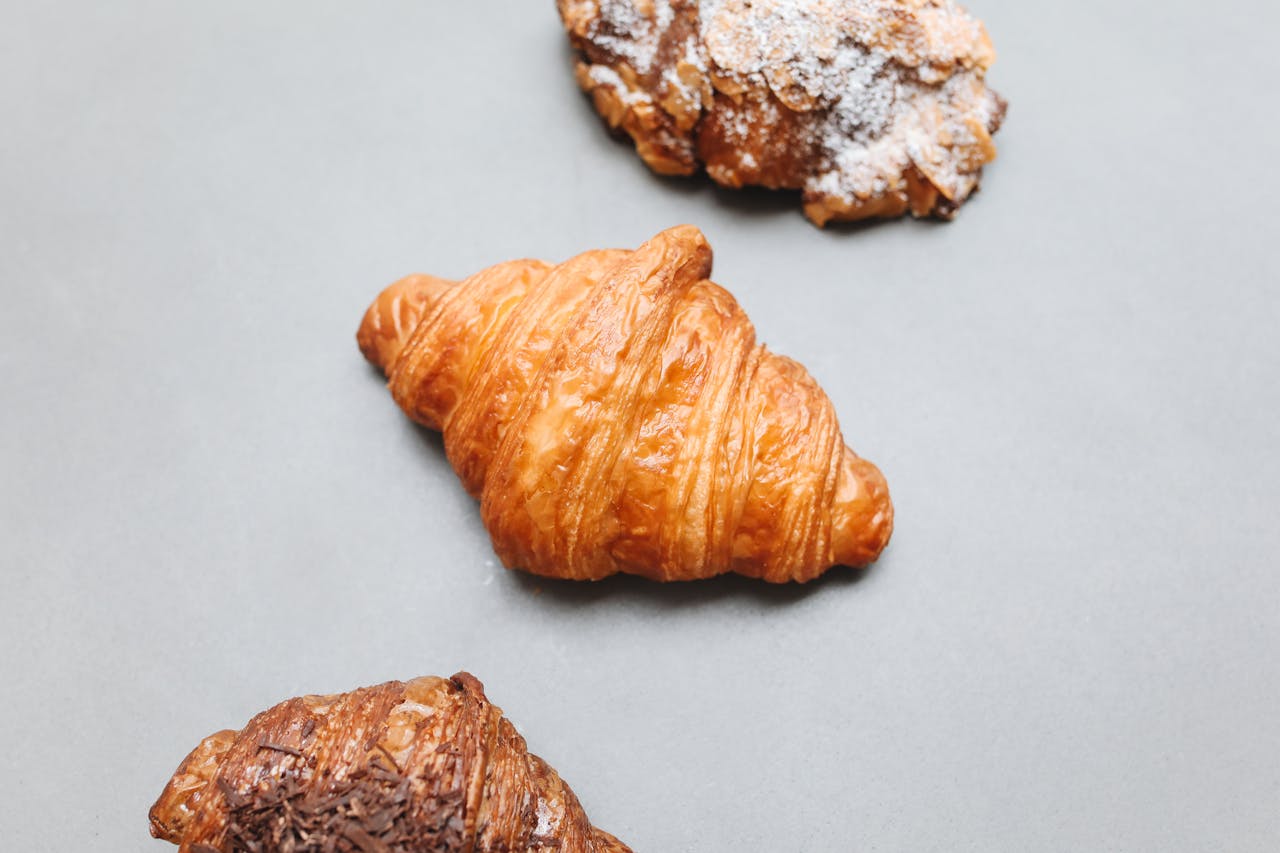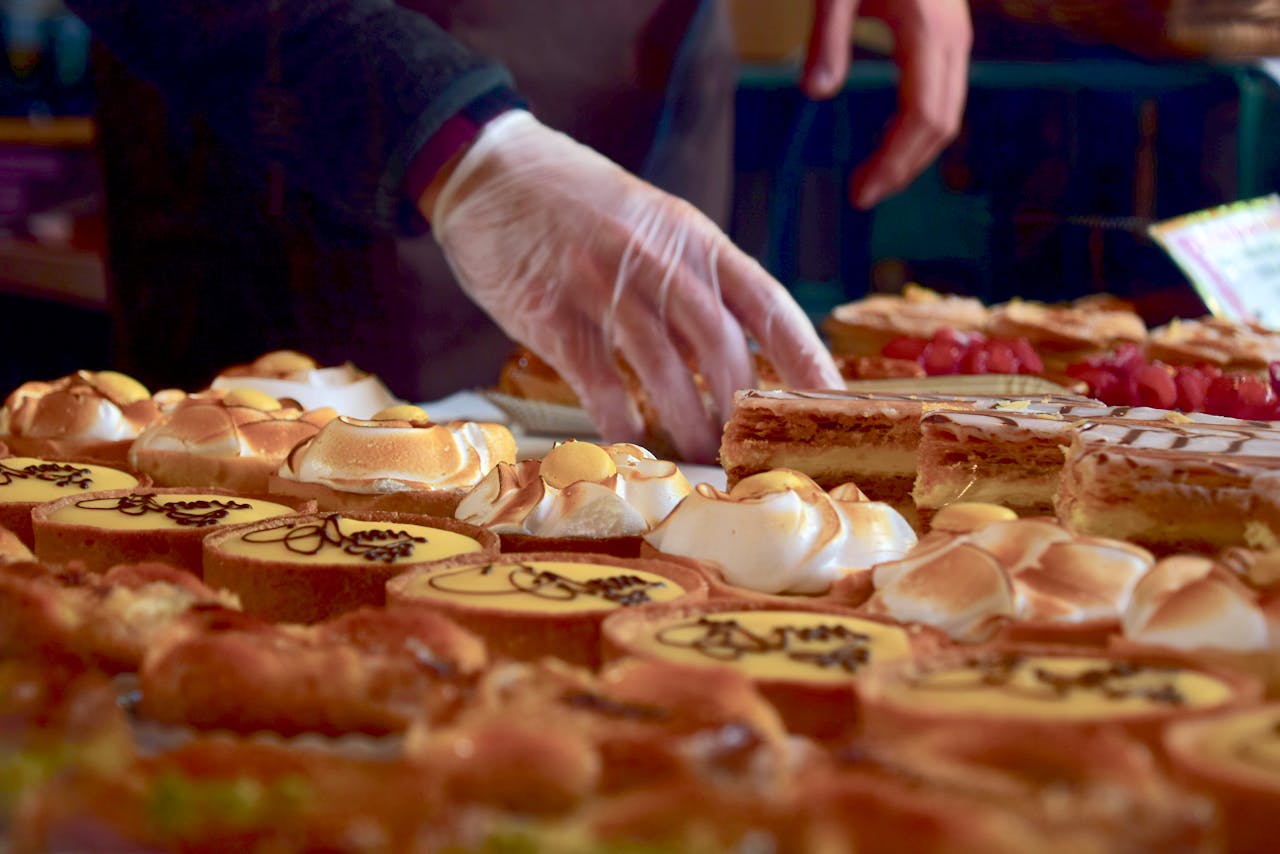To get bread that rises beautifully and has a light, airy crumb, you’ll want to focus on a few key techniques:
- Use Strong Flour (High Gluten Content):
- For bread, use bread flour (high gluten content) to help the dough rise well and hold its structure. This will also help with the elasticity needed for a good rise.
- Proper Yeast Activation:
- Ensure the yeast is fresh and properly activated. For active dry yeast, dissolve it in warm water (around 100-110°F or 37-43°C) with a bit of sugar to get it bubbly before adding it to the dough.
- If you’re using instant yeast, you can mix it directly with the flour, as it doesn’t need to be activated.
- Kneading:
- Kneading is crucial for developing gluten, which helps trap the carbon dioxide produced by yeast. Knead your dough until it’s smooth and elastic. This usually takes about 8-10 minutes by hand or 5-6 minutes in a stand mixer.
- Proper Proofing:
- Allow the dough to rise (proof) until it’s doubled in size. This usually takes about 1-2 hours, depending on the temperature and the recipe.
- For a better rise, you can do a slow, overnight fermentation in the fridge for more flavor and better texture.
- Punching down the dough after its first rise allows you to release air and gives the dough a more even texture when it rises again during the second proof.
- Oven Temperature:
- Preheat the oven well before baking (usually around 375-425°F or 190-220°C for most bread recipes).
- Adding steam in the first 10-15 minutes of baking helps create a beautiful, crisp crust. You can do this by placing a pan of hot water in the bottom of the oven or misting the dough with water before it goes in.
High-Rise Cake Tips:
For cakes, achieving a light, high-rise texture typically requires a careful balance of ingredients, mixing techniques, and oven temperature.
- Room Temperature Ingredients:
- For most cakes, make sure butter, eggs, and milk are at room temperature. This helps the batter mix more evenly, which gives a lighter, fluffier texture.
- Use Cake Flour for a Tender Crumb:
- Cake flour has less protein than all-purpose flour, which results in a softer, more tender crumb. If you don’t have cake flour, you can substitute it by using 1 cup all-purpose flour minus 2 tablespoons and adding 2 tablespoons of cornstarch.
- Creaming Butter and Sugar:
- Creaming butter and sugar together until light and fluffy (around 3-5 minutes with an electric mixer) helps incorporate air into the batter, giving the cake its rise.
- Don’t Overmix the Batter:
- Once the flour is added, mix the batter just until combined. Overmixing will cause the cake to become dense because it develops the gluten too much.
- Leavening Agents:
- Baking powder and/or baking soda are key for helping cakes rise. Make sure they’re fresh—expired leavening agents can cause flat cakes.
- Use the correct amount according to the recipe; too little can result in a dense cake, while too much can cause the cake to collapse.
- Properly Preheat the Oven:
- Make sure the oven is preheated to the right temperature before placing the cake inside. A hot oven helps set the cake’s structure early on, contributing to a good rise.
- Don’t Open the Oven Door Too Early:
- Avoid opening the oven door during the first 20 minutes of baking, as this can cause the cake to deflate. Once the cake is firm and golden, it’s safe to check.
- Check Doneness with a Toothpick:
- When your cake looks golden and risen, check its doneness by inserting a toothpick into the center. If it comes out clean or with a few crumbs, it’s done.
Extra Tips for Both:
- Avoid Overmixing or Overworking the Dough/Batter: For both bread and cake, overmixing can lead to tough texture or a lack of rise.
- Don’t Skip the Resting Time: Let your dough or batter rest and rise as needed. Rushing this step will affect your results.
- Oven Position: For even baking, place your bread or cake in the center of the oven.


